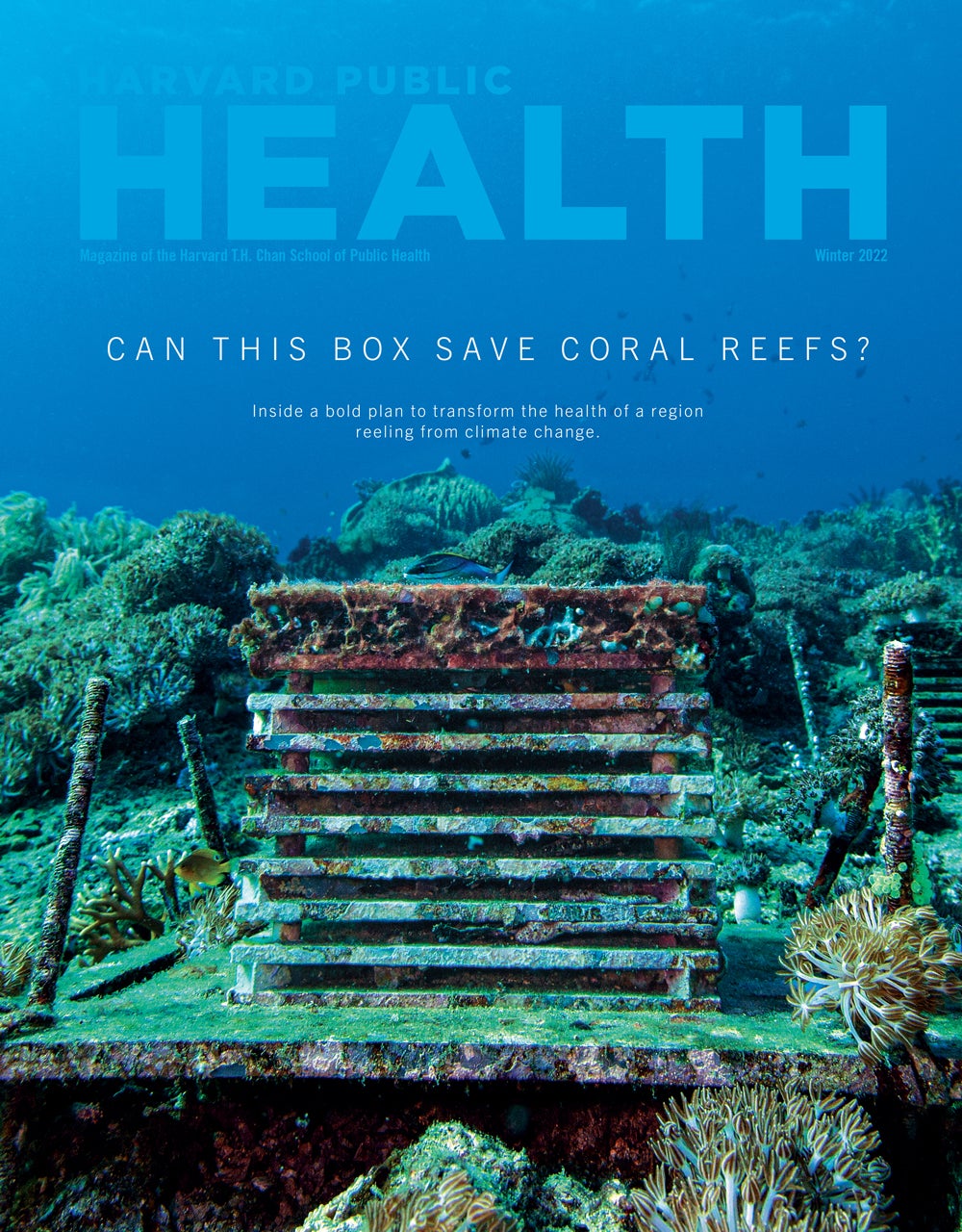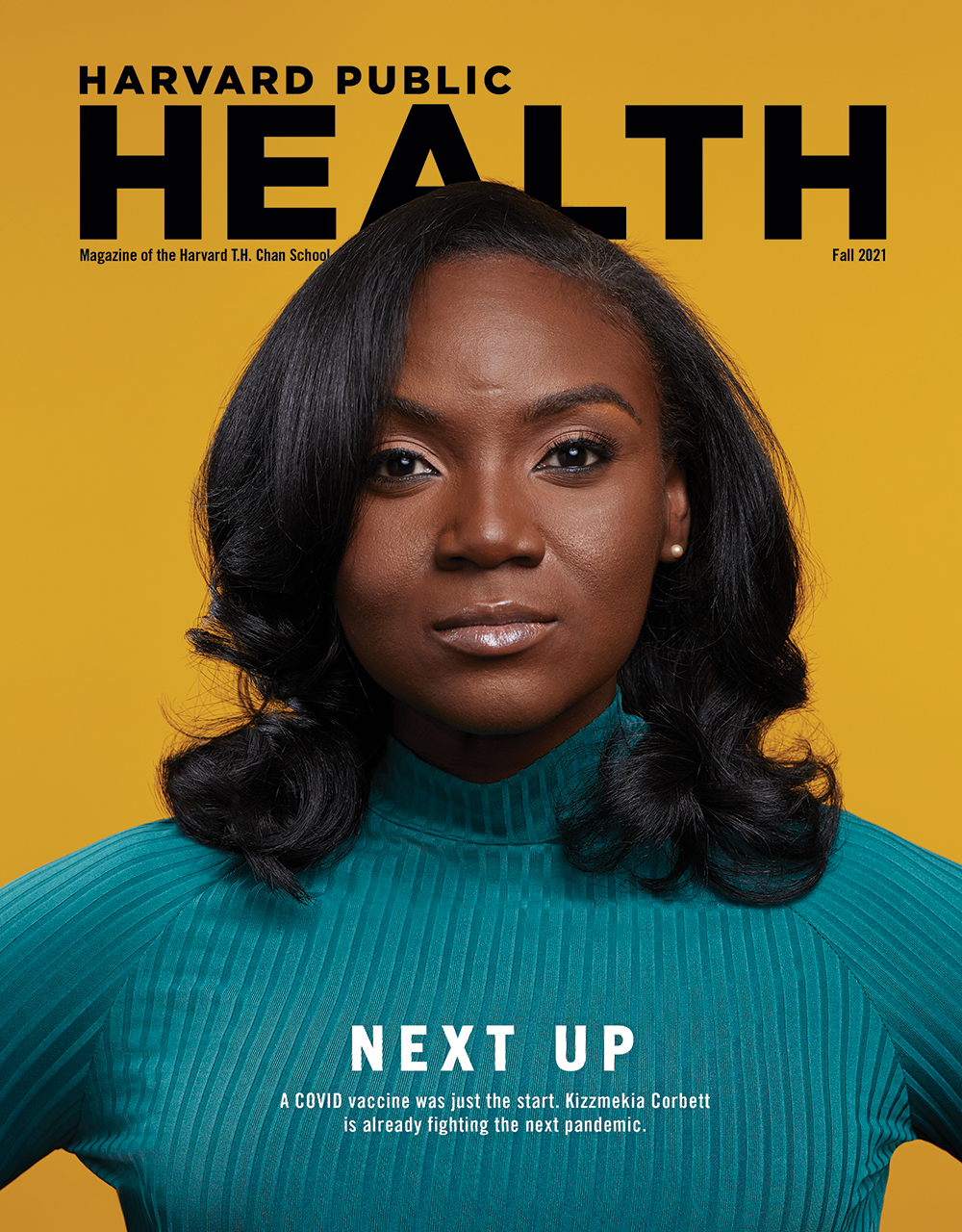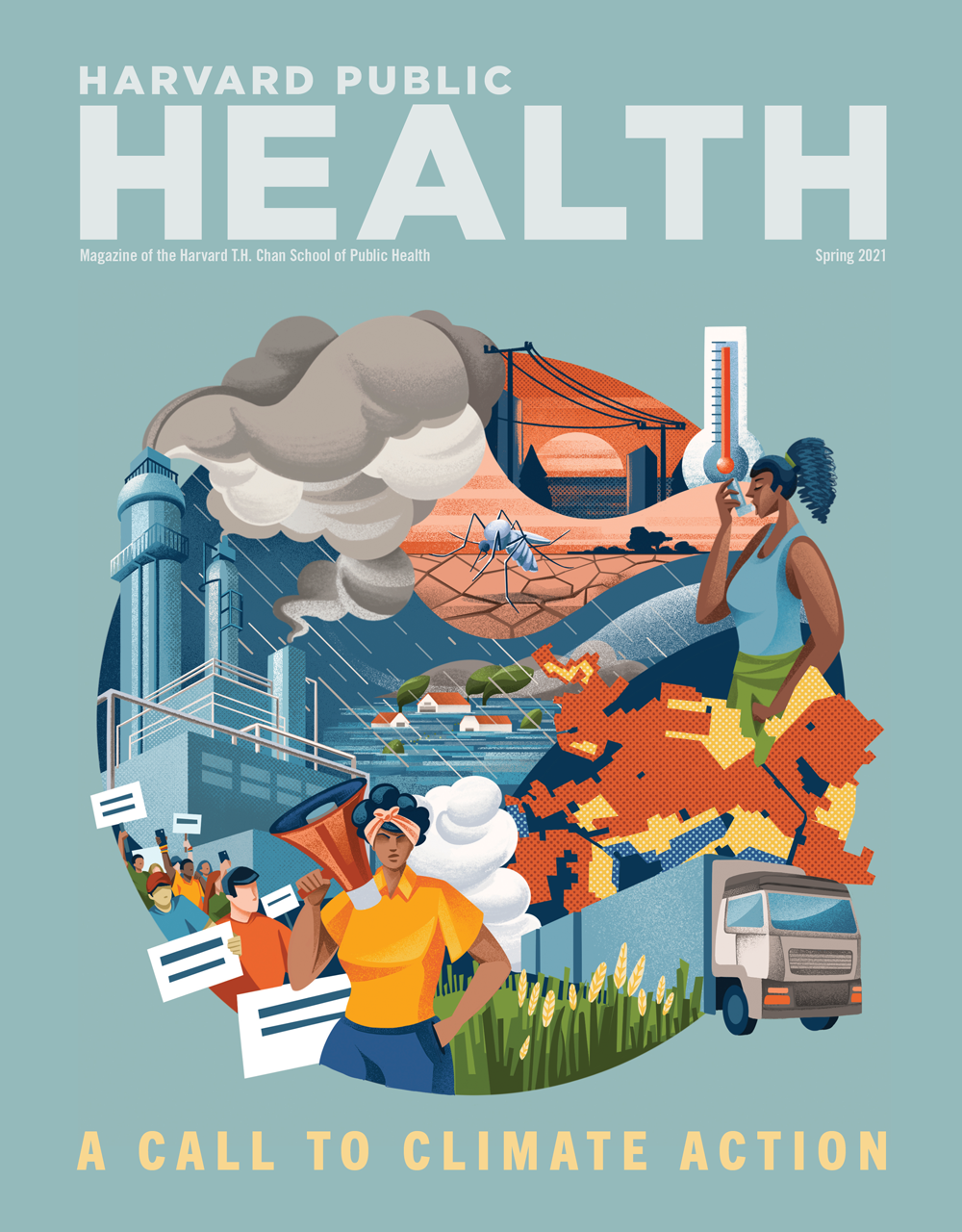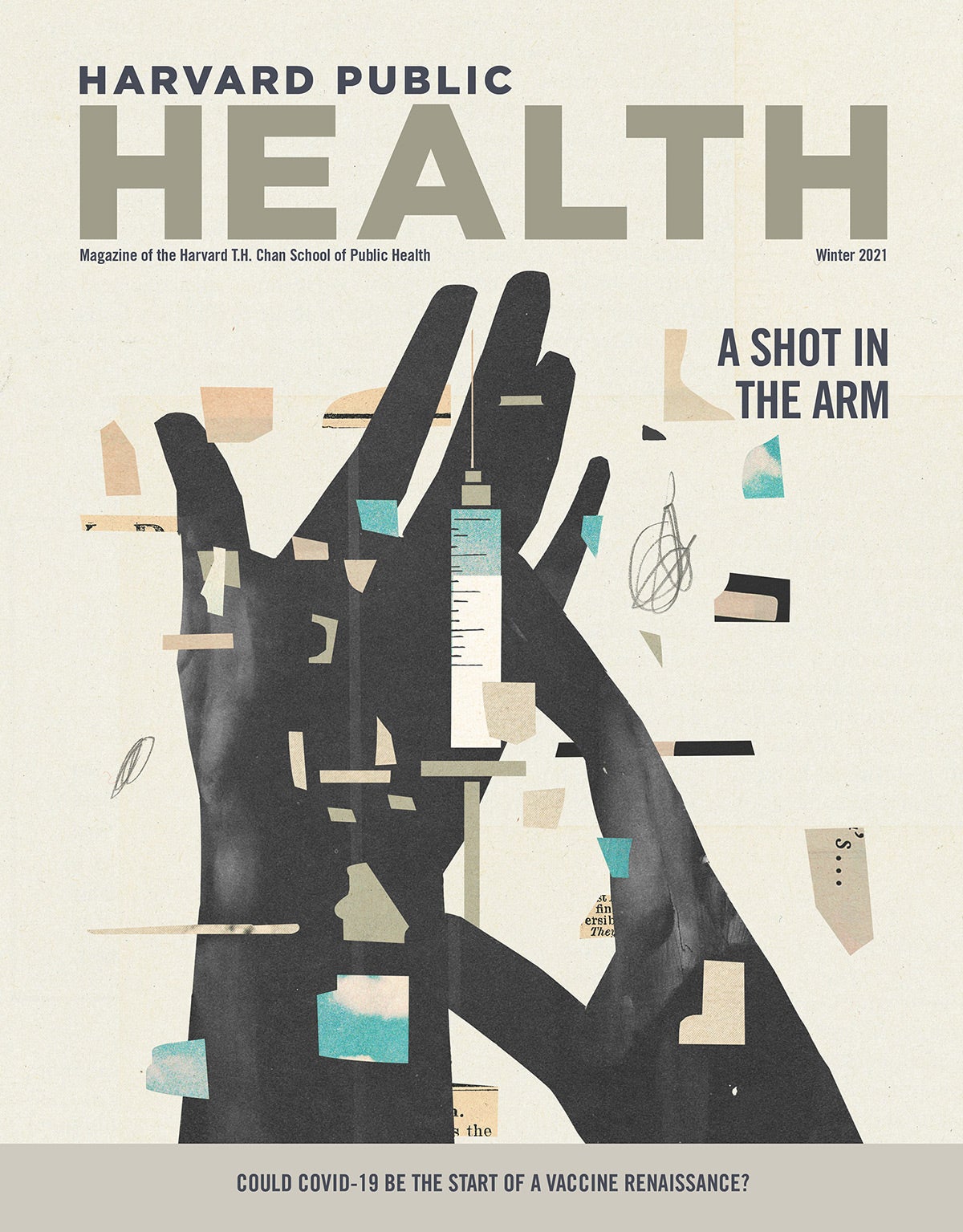Quick updates about the latest public health news from across the School and beyond.
Is climate change a nutrition disaster?
The most significant threat to human health posed by climate change may not be rising sea levels or heat waves, says a new HSPH study. When grains and legumes—important sources of zinc and iron for billions of people around the world— were exposed to levels of atmospheric carbon dioxide the world is expected to experience by 2050 during their growing season, they were found to contain far lower concentrations of zinc and iron upon harvesting. Given that an estimated 2 billion people around the world are already deficient in these nutrients—resulting in a loss of 63 million life years annually—damage to the nutritional value of staple crops represents a major public health threat, says lead author Samuel Myers, MPH ’07, a research scientist in the Department of Environmental Health.
Don’t take anger to heart
People who have angry outbursts are more likely to suffer heart attack or stroke, especially within the first two hours of an outburst, according to a study by HSPH researchers and colleagues. Individuals with cardiovascular disease are particularly vulnerable. Reviewing data from nine studies involving thousands of people, the researchers found that heart attack risk increased about five times in the two hours after an outburst and the risk of stroke more than tripled. The transiently higher risk of heart attack and stroke immediately after outbursts of anger are likely to boost the lifelong risk of these conditions for people who get angry more frequently, and for people already more vulnerable to cardiovascular disease because of such risk factors as smoking, obesity, and a sedentary lifestyle.
Veggies: Lunch or landfill?
Healthier school lunch standards launched two years ago by the U.S. Department of Agriculture appear to be working, according to an HSPH-led study. The new guidelines require schools to offer more fruits and vegetables, remove trans fats, and limit total calories and sodium levels. To see how this worked in the real world, lead author Juliana Cohen, SM ’07, SD ’12, a research fellow in the HSPH Department of Nutrition, and colleagues collected platewaste data from 1,030 students in four schools in an urban, low-income school district both before and after the new standards went into effect.
The results were promising: With more fruits and vegetables available under the new guidelines, students selected 23 percent more fruit and 16.2 percent more vegetables. And despite anecdotal claims that healthier food is destined for the garbage, overall waste levels decreased.
Centennial Fellows debut new DrPH degrees
In July, Harvard School of Public Health welcomed the inaugural class of 15 doctor of public health (DrPH) candidates. Known as the Centennial Fellows, they are an unusually diverse group, hailing from Argentina, Brazil, Pakistan, Saudi Arabia, and the United States. The Fellows have worked in settings ranging from federal governments and private consulting agencies to global nongovernmental organizations and even a newspaper, and have launched their own for-profit business and nonprofit agencies.
Some of these men and women have shown promise in the early stages of their careers, while others have been practicing in public health or medicine for many years and seek to work at a higher level. A unifying priority for each student is a commitment to helping underserved and vulnerable populations.
The program will prepare the Centennial Fellows for creative leadership roles directing government agencies, NGOs, research institutions, and corporations that focus on helping people live longer, healthier lives. The three-year interdisciplinary program features coursework in essential public health topics—such as biostatistics, epidemiology, and social sciences— as well as classes in leadership, management, innovation, and communications. Instead of a dissertation, the program’s hallmark is the DrPH DELTA Project, a 9- to 18-month culminating experience focused on achieving a significant public health outcome by working at a public health-related organization or agency.
Tune in for a bad night’s sleep
Each additional hour of TV watching may knock seven minutes off a child’s nighttime sleep, according to an HSPH study that followed more than 1,800 children from ages 6 months to nearly 8 years. Boys were more likely than girls to have their sleep disturbed by television. Racial and ethnic minority children were much more likely to sleep in a room where a television was present, and among those children, the presence of a bedroom television reduced average sleep time by around 30 minutes a night. Television watching and insufficient sleep can raise the risks of depression and obesity, noted senior author Elsie Taveras, MPH ’03, associate professor in the Department of Nutrition.
What common chemicals can do to kids’ brains
The recent rise in childhood neurodevelopmental disabilities such as autism, attention-deficit hyperactivity disorder, and other less apparent conditions may be linked to widely used industrial chemicals. New research from Philippe Grandjean, adjunct professor of environmental health at HSPH, and Philip J. Landrigan, dean for global health at the Icahn School of Medicine at Mount Sinai in New York, linked a range of common chemicals—including pesticides found in the garden or everyday foods and flame retardants widely used on furniture and clothing, as well as better-known hazards like lead and mercury—to toxic damage during brain development in children. The authors called for a global prevention strategy to identify and control the use of these substances.
Does universal health insurance save lives?
In the first four years after Massachusetts instituted comprehensive health reform in 2006, deaths of adults ages 20–64 in the state dropped by 2.9 percent, compared with similar populations in states that didn’t expand health coverage. HSPH researchers estimate that Massachusetts’ health reform law, which provided near-universal coverage, has prevented approximately 320 deaths per year—one life saved for every 830 people gaining insurance. The drop in deaths was most significant among patients with illnesses likely to benefit from increased access to health care, including infections, cancer, and cardiovascular disease. “Given that Massachusetts’ health reform was in many ways the model for the Affordable Care Act, it is critical to understand the law’s potential implications for population health,” says Benjamin Sommers, assistant professor of health policy and economics at HSPH and lead author of the study.
Magazine wins three prestigious awards
“Guns & Suicide: The Hidden Toll,” by Harvard Public Health editor Madeline Drexler—the cover story in the Spring 2013 issue of the magazine—was named the Grand Gold Winner for Best Article of the Year in the CASE (Council for the Advancement and Support of Education) 2014 Circle of Excellence Awards. The story also received the 2014 Neil Duane Award of Distinction and the 2014 Will Solimene Award for Excellence in Medical Communication, both from the New England chapter of the American Medical Writers Association.
Photo Credits: © iStock; Michael Floreak; © Tony Rinaldo; Shaw Nielsen; © Jim Young / REUTERS
Download a PDF of Fall 2014 frontlines







